Toddler with Low Muscle Tone – The Best Shoe Styles to Improve the Way Your Child Walks
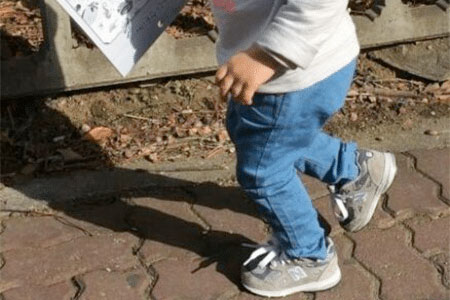
Has your physical or occupational therapist diagnosed your toddler with low muscle tone and recommended supportive shoes to help improve your child’s posture and stability? I have noticed that many medical professionals recommend fitting children in supportive shoes but don’t make specific shoe recommendations. Here is where I come into play, as I am a shoe fitter with over a decade of experience. I have helped several children with low muscle tone improve their foot posture, walking gait, and stability, and hopefully, I will be able to help your child as well.
What Is Low Muscle Tone?
Low muscle tone is used to describe muscles that are floppy. Toddlers with low muscle tone may need to put in more effort to get their muscles moving properly when they are performing a particular activity. Your toddler might have been diagnosed with low muscle tone for any of the following reasons:
- Your toddler muscles might appear to be less firm than usual.
- Your toddler appears to be floppy and to have loose joints.
Do Children with Low Muscle Tone Have Flat Feet?
I have noticed throughout the years how many children with low muscle tone have flat feet, and children with flat feet have poor balance and coordination.
Toddlers with Low Muscle Tone – Do These Images Look Familiar?
One of the first things I want you to pay attention to is your toddler’s posture in weight-bearing. Do you notice your toddler’s feet collapsing when standing? This might be a sign that your toddler is flat-footed.
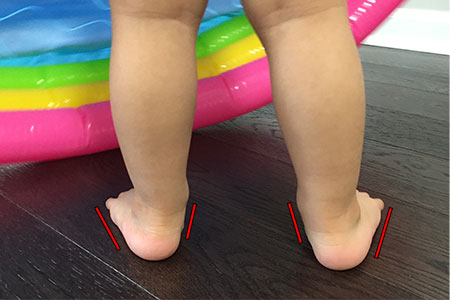
Do you also notice poor alignment and your toddler’s heels rolling outwards?
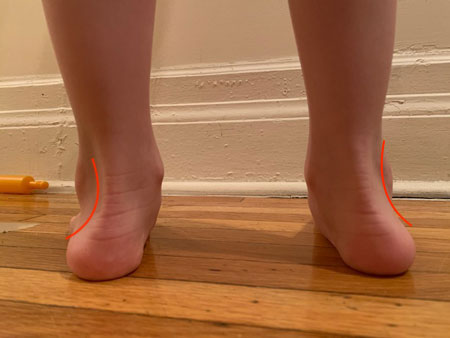
These are both signs that your toddler might have low muscle tone. As toddlers begin to stand and walk, they start strengthening their muscles as they are using them in gait. However, toddlers with low muscle tone and pronation often develop a poor gait pattern as instead of a heel-toe pattern of walking, they use a toe-heel pattern.
Can Supportive Shoes Help Children with Low Muscle Tone?
Providing your toddler with a pair of supportive shoes can help provide the extra support that joints need for good posture and movement. When I help parents with toddlers with low muscle tone, I always recommend trying a good supportive shoe before trying an orthotic.
Let’s first take a look at an image of a toddler with low muscle tone standing barefoot. Do you notice how the feet are collapsing and turning inwards?

Let’s now take a look at an image of the same toddler wearing a pair of supportive shoes that I recommend. Do you notice how the feet are a lot straighter?

Wow! What a difference the correct types of shoes can make!
Key Features of Supportive Shoes for Toddlers
1️⃣ Firm Heel Counters: This key feature helps straighten and strengthen your toddler’s ankles. The heel counter is the back part of the shoe that provides ankle support. Always press on the heel counter and make sure that it feels firm and not too soft or flimsy.

2️⃣ Substantial Outsoles: This feature helps align your toddler’s feet properly, providing a stable base for your toddler’s feet. Please don’t assume that supportive shoes hinder foot development.
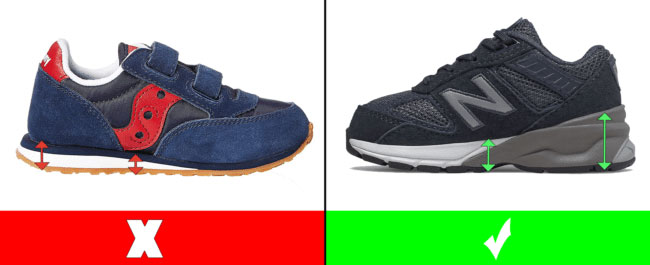
3️⃣ Flexibility: While the shoes need to be supportive, they need to be lightweight and flexible at the same time. This feature helps prevent your toddler’s feet and legs from easily getting tired. Your toddler’s shoes should always bend at the ball of the foot but no further.
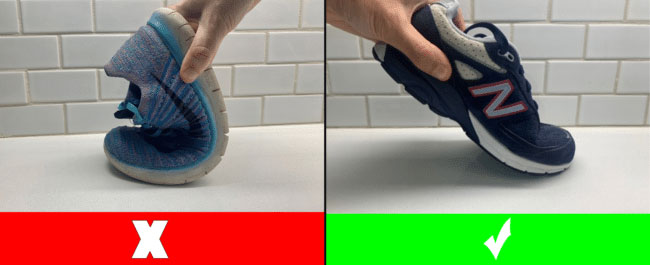
4️⃣ Straight Last: Shoes with straight lasts will help keep your child’s feet in the correct position. Always try to avoid shoes with excessively curved lasts:

Another great feature of the shoes that I recommend is that they come in different widths such as medium (M), wide (W), and extra wide (XW). This means that the shoes will fit any type of foot shape, no matter how narrow or wide they are. Disclosure: Some links in this post may be affiliate links and we may receive a small commission (at no extra cost to you) when you click our links and make purchases.
Best Shoes for Toddlers with Low Muscle Tone for Better Posture
Lace-Up Closure

- Order the shoe style 990V6 by New Balance on the New Balance website
- Fits toddlers with medium, wide, or extra wide feet
- Strong rubber outsole and cushioned midsoles
- Suede/mesh upper provides durability and breathability
- I suggest that you get this shoe a whole size larger than your child’s current foot size
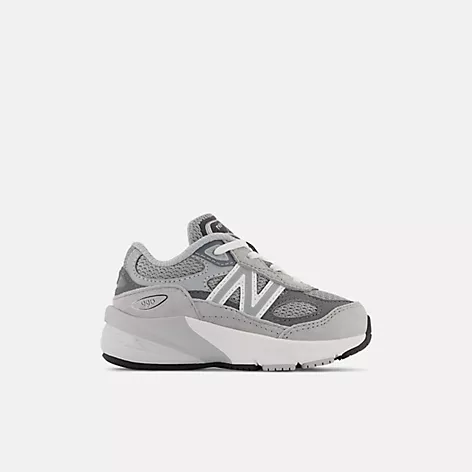
- Order the shoe style 990V6 by New Balance on the New Balance website
- Fits toddlers with medium, wide, or extra wide feet
- Strong rubber outsole and cushioned midsoles
- Suede/mesh upper provides durability and breathability
- I suggest that you get this shoe a half size larger than your child’s current foot size

- Order the shoe style SRT Emilia by Stride Rite on Amazon
- Fits toddlers with medium, wide, or extra wide feet
- Strong rubber outsole and a cushioned midsole
- 100% leather made
- I suggest that you get this shoe a whole size larger than your child’s current foot size

- Fits toddlers with medium, wide, or extra wide feet
- 100% leather made
- Seamless construction that cradles the foot’s natural shape
- I suggest that you get this shoe a whole size larger than your child’s current foot size

- Fits toddlers with medium, wide, or extra wide feet
- 100% leather made
- Seamless construction that cradles the foot’s natural shape
- I suggest that you get this shoe a whole size larger than your child’s current foot size

- Order the shoe style 990V6 by New Balance on the New Balance website
- Fits toddlers with medium, wide, or extra wide feet
- Suede/mesh upper provides durability and breathability
- I suggest that you get this shoe a half size larger than your child’s current foot size

- Order the shoe style 2002 by New Balance on the New Balance website
- Fits toddlers with medium or wide feet
- Suede/mesh upper provides durability and breathability
- I suggest that you get this shoe a half size larger than your child’s current foot size

- Order the shoe style 990V6 by New Balance on the New Balance website
- Fits toddlers with medium, wide, or extra wide feet
- Strong rubber outsole and cushioned midsoles
- Suede/mesh upper provides durability and breathability
- I suggest that you get this shoe a half size larger than your child’s current foot size
Velcro Closure

- Order the shoe style Tracks by Timberland on Zappos
- Fits toddlers with medium or wide feet
- Breathable textile lining
- Stable base of support with firm heel counters
- I suggest that you get this shoe a whole size larger than your child’s current foot size

- Order the shoe style Cohesion on Zappos
- Fits toddlers with medium or wide feet
- Heel grid system for stable cushioning
- Compression molded EVA footbed for comfort
- I suggest that you get this shoe a whole size larger than your child’s current foot size
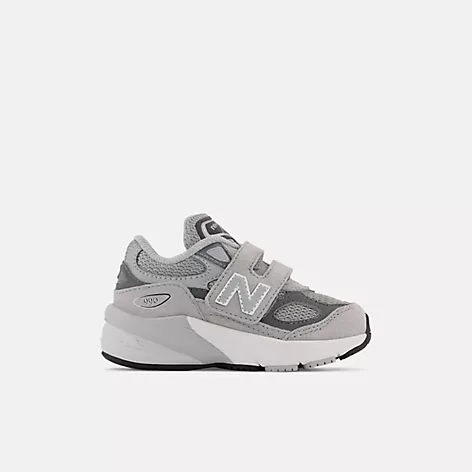
- Order the shoe style 990V6 by New Balance on the New Balance Online Store
- Fits toddlers with medium, wide, or extra wide feet
- ABZORB midsole absorbs impact through a combination of cushioning and compression resistance
- Removable insoles
- Extra deep
- I suggest that you get this shoe a half size larger than your child’s current foot size
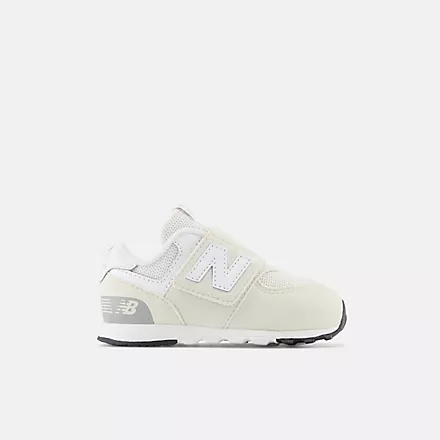
- Order the shoe style 574 on the New Balance website
- Fits toddlers with medium, wide, or extra wide feet
- Generous toe box and instep to accommodate and support your toddler walker’s needs
- Rubber outsole pods designed to stand up to daily wear and tear
- Extra deep
- I suggest that you get this shoe a whole size larger than your child’s current foot size

- Order the shoe style Gabi by Memo on Amazon
- Fits toddlers with medium or wide feet
- Thermoplastic asymmetric stiff heel counter for proper feet protection and stabilization
- Stiff and high ankle support for toe walkers
- I suggest that you get this shoe a half size larger than your child’s current foot size

- Order the shoe style Gabi by Memo on Amazon
- Fits toddlers with medium or wide feet
- Thermoplastic asymmetric stiff heel counter for proper feet protection and stabilization
- Stiff and high ankle support for toe walkers
- I suggest that you get this shoe a half size larger than your child’s current foot size

- Order the shoe style 990v4 by New Balance on the New Balance website
- Fits toddlers with medium or wide feet
- Generous toe box and instep to accommodate and support your toddler walker’s needs
- Extra deep
- I suggest that you get this shoe a whole size larger than your child’s current foot size
Get in Touch for a Personalized Suggestion
Without a doubt, children’s shoe needs can vary depending on their age, activity level, and any specific foot conditions they may have. If you have any questions or need any further assistance, you can also contact me via email and I will get back to you as soon as possible.
How to Retrieve Your Toddler’s Exact Foot Length and Shape
I created a virtual shoe fitting service that will help you retrieve your child’s shoe size from home.
In certain cases, providing your toddlers with a pair of good, supportive shoes is not going to be enough to improve their posture and help them walk and run straighter. If this is the case with your toddler, then an orthotic might be required for extra support and to help align your toddler’s feet and legs to walk straighter.
The orthotics I recommend for toddlers with low muscle tone are the least restrictive ones as they allow for the normal movement of the foot. One of the main reasons why the orthotic works so efficiently for toddlers with low muscle tone is that it provides a deep heel cup (30mm to be more precise) that provides stability and improves the child’s walking gait.
Testimonials from Families



Shoes for Toddlers with Low Muscle Tone – Watch Video!
I created a video to help you better visualize what features your toddler’s shoes should provide to support your toddler’s joints and promote good posture and movement.
“Low Muscle Tone And Your Child – What You Need To Know.” Surestep, 1 Dec. 2016, surestep.net/blog/low-muscle-tone-hypotonia-an-overview-for-parents/.
“Muscle Weakness (Hypotonia): Boston Children’s Hospital.” Boston Children’s Hospital,www.childrenshospital.org/conditions-and-treatments/conditions/m/muscle-weakness-hypotonia.


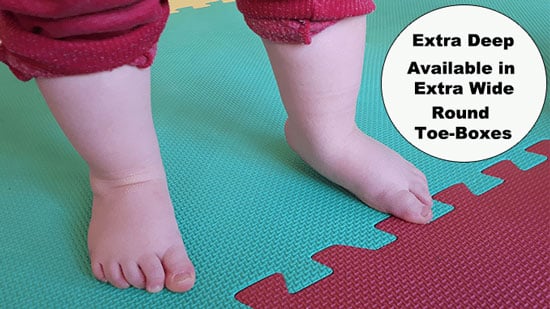

Hello
Stumbled upon this useful website of yours. I have a 4 year old boy, with hypotonia with back ankle bones collapsing inwards like the pictures on your website. what supportive shoes can we get for him? Iis it too late to fix this problem? We do prefer a velcro shoe so he can wear them himself in nursery.
I’m currently living in UK. Thank you
Hello Serene,
To recommend specific shoes for your son I first will need to know his foot shape (narrow, medium, wide, extra wide), and the exact shoe size that he wears.
What is the model name/number of the last sneaker shown in blue on the velcro side? When I click on the link it just takes me to the New balance home page.
Hello Laura,
That specific color is sold out, but here is a link to the same model in a different color: 574 New Balance Shoe
There are only a few shoe sizes available so let me know if you are having a hard time finding your child’s shoe size and I can help you look for the same shoe on a different website.
Hello there, my daughter is 2.5 years old is not walking due to low muscles tone, I am looking for the shoes which can help and support her for learning to walk, could you please guide me which one is good for her?
Hello Sheetal,
To recommend specific shoes for your daughter I first need to know her foot shape (narrow, medium, wide, extra wide), and the country you are contacting me to check what shoes you will be able to order.
What is a good shoe to get if toddler wears orthotics? Size 2 extra wide new balance with removable soles is what we have now. He has wide feet so need something wide. Also small feet. He is learning to walk. But without orthotics walks on his ankles. The ones we have are Velcro.
Hello,
The New Balance that you have are probably a good choice. I do suggest getting shoelaces instead of velcro closure as shoelaces provide better support and stability compared to velcro. Another alternative to New Balance is this shoe: Stride Rite Bootie
Make sure to order the extra wide (X-Wide), remove the original insoles, and apply this shoe lacing technique: How to Tie Shoes with Orthotics – Stop Heel Slippage
My son has flat feet so I need a good pair of shoes for him , He is 6 years old
Hello Gurleen,
Do you know if his feet are medium, wide, or extra wide? Would you like a pair of velcro shoes or shoes with shoelaces? Once you get back at me with that information I can show you a selection of shoes for boys with flat feet.